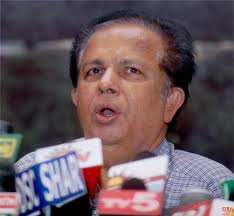
Bangalore, Jul 24: India's 'Moon Man' has contested ISRO's contention that the upcoming 'desi' Mars orbiter mission would undertake meaningful research, and dubbed the Rs 450 crore venture as a "publicity stunt".
"ISRO is embarking on an extravagant mission which at best can serve as a publicity stunt", G Madhavan Nair, a former chief of the Bangalore-headquartered Indian Space Research Organisation, told PTI here.
The country was facing an acute shortage of communication transporters, noted Nair during whose tenure of six years as ISRO Chairman and Secretary in the Department of Space, 25 successful space missions were accomplished, including India's maiden moon venture Chandrayaan-I.
ISRO should have solved this issue by following the K Kasturirangan Committee recommendation, he argued.
"Even if the launch takes place, it will be yet another PSLV launch only. One has to wait nearly eight months before anything of MARS is heard. This is an issue which needs a serious review by the scientific community", Nair said.
According to him, GSLV was the vehicle identified because it could take a respectable satellite of nearly 1,800 kg. This could have provided more than a dozen instruments on board and the spacecraft would have been placed in a near circular orbit for a meaningful remote sensing mission of Mars.
"But what is the fate of the much hyped Mars Orbiter Mission (ISRO's mars mission as conceived now) - there were delays in solving the problems of GSLV so a study was undertaken see what can be done with PSLV. Nearly 1500 kg satellite can be taken to Mars, but due to fuel limitation it could at best be placed in an elliptical orbit of 380 km perigee and 80000 km apogee. No one would attempt a resource survey or mapping mission with such widely varying altitudes", Nair said.
ISRO Chairman K Radhakrishnan told PTI recently the Mars mission would undertaken meaningful research.
The primary objectives of the mission, according to ISRO, are to demonstrate India's technological capability to send a satellite to orbit around Mars and conduct meaningful experiments such as looking for signs of life, take pictures of the red planet and study Martian environment.
ISRO is going to start in August first week the assembly of PSLV-C25, the rocket on board of which the Mars orbiter would be launched any day between October 21 and November 7.
Elaborating further, Nair said though there was an initial estimate of 25 kg for the scientific instruments, on detailed analysis provision it was reduced to a meagre 14 kg.
This may further come down.
As it stands today, there could be just five instruments -- a Mars Colour camera (MCC) to take pictures of Mars; Mass Methane Sensor (MMS) to study the amount and origin of Methane on Mars; Lyman Alpha Photometer (LAP), to study the ratio of Hydrogen and Deuterium on Mars; Mars Exosphere Neutral Composition Analyser (MENCA), to study Martian atmosphere AND Thermal Infrared Imaging Spectrometer (TIS).
"Constraints on mass are likely to reduce these payloads," he said. "With such skeletal instruments on board a spacecraft travelling at altitudes varying from 380 and 80,000 km what meaningful science can be done is a big question mark. This is exactly a case of cutting the head to suit the hat," he contended.
Nair said in Chandrayaan-I when the number of instruments had to be increased, the propulsive power of PSLV was enhanced whereas for Mars Orbiter Mission the desired rocket was not available and the spacecraft was curtailed to an insignificant size.
"Not only that, many of the sub-systems of (the proposed) Chandrayan-2 were cannibalised for the Mars Mission delaying the more meaningful Chandrayan-2.
Chandrayan-2 may take place in 2016 or beyond. China is going with similar mission to moon later this year, not to Mars," he said.
"Mission to Mars is claimed to be complex and challenging. No one familiar with orbital mechanics will appreciate this. The sequence for Mars Mission is identical from the earth's orbit. It will be catapulted on path which will reach near moon or Mars. It may take five days to Moon and eight months to Mars because of the long distance. One has to wait and watch and nothing significant needs to be done during this long wait."





Comments
Add new comment